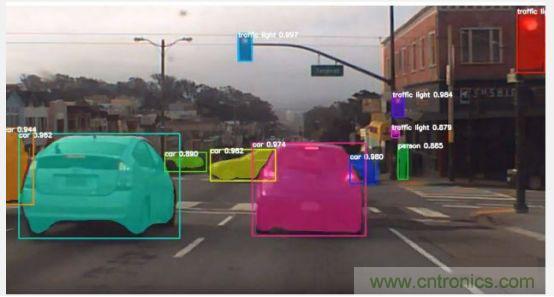
Ever wondered how some traders seem to make money almost non-stop while others work within massive hedge funds or investment firms? Today, were diving into the intriguing world of prop trading and hedge funds—two titans of the financial universe that operate in different ways but share a common goal: making profitable bets on markets. Whether youre eyeing a career, thinking about investments, or just fascinated by financial machinations, understanding these two can open up new perspectives on tradings future and opportunities.
Proprietary trading, better known as prop trading, involves traders using the firms own money to make bets across stocks, forex, cryptocurrencies, commodities, and options. Think of it as being handed a sandbox of capital—your own money, but inside a bigger playground. Traders in prop firms arent working for clients; instead, they’re the clients, putting their skills—and sometimes their years of experience—to the test.
For instance, imagine a seasoned forex trader who spots a pattern suggesting the euro might rise against the dollar. With prop trading, they can execute large positions directly, potentially earning significant profit if the market moves in their favor. The advantage? No client approval delays, flexible strategies, and the ability to capitalize quickly on short-term opportunities.
But it’s not just about quick wins. Skilled prop traders often experiment with multiple asset classes—stocks, crypto, indices, commodities—mastering diverse markets to develop a competitive edge. Since they’re staking their firm’s capital, discipline and risk management are critical. A common pitfall? Overleveraging. In volatile assets like crypto or options, a single misstep can wipe out gains or, worse, hit the firm’s bottom line.
On the flip side, hedge funds are like the financial giants—managing pools of investor capital with broad strategies aiming for steady growth and risk mitigation. Hedge fund managers often employ sophisticated algorithms and macroeconomic insights, investing across assets, markets, and even geographies.
Think of hedge funds as the affluent investor’s playground—using leverage, derivatives, and sometimes complex derivatives like swaps to optimize returns. They operate with larger capital reserves, which allows for diversification but also introduces dilution of individual trader control. Hedge funds tend to focus on long-term strategies, but many also engage in high-frequency trading or short-term arbitrage, blurring the line between traditional and modern approaches.
Because they’re managing external money, hedge funds face intense pressure to deliver consistent results, leading to a rigorous compliance framework and strategic rigor. The big difference? Many hedge funds tend to be more bureaucratic, opting for safer, more structured investments—though exceptions like quantum hedge funds are pushing toward aggressive, tech-driven trades.
Prop Trading shines with agility. Traders can try out novel strategies, leverage the latest tech, and adapt swiftly to market shifts. In today’s fast-moving world of cryptocurrencies and decentralized finance (DeFi), prop traders are already experimenting with automated bots, AI, and smart contracts to seize opportunities faster than traditional players. This entrepreneurial vibe allows for rapid learning—think of it as a startup ethos in finance—where failures are seen as stepping stones.
The caveat? Risk management must be airtight. The more aggressive the trades, the higher the stakes. Also, limited scale can be a constraint; without massive capital, some opportunities might be out of reach.
Hedge funds, meanwhile, benefit from scale, diversification, and experience. Their larger operations can withstand market downturns better and can navigate complex macro trends. Plus, they often have access to exclusive deals and sophisticated analytical tools. But their size can hinder agility—big moves take longer to implement, and a sluggish response might mean missed chances in volatile environments.
Thinking about where prop trading is headed, innovation is the key. Decentralized Finance (DeFi) is creating a new playing field—eliminating middlemen, allowing traders to operate with less friction and more transparency. Yet, DeFi also introduces hurdles like security risks, regulatory uncertainty, and liquidity issues. The challenge is making decentralized trading more reliable and scalable.
On the horizon? AI-driven trading strategies are revolutionizing both prop firms and hedge funds. Algorithms can process mountains of data—think AI scanning social media sentiments, economic indicators, or even predicting crypto trends—delivering insights at lightning speed. Imagine a trader in a prop firm deploying an AI bot that spot opportunities in forex and crypto markets simultaneously, executing trades autonomously based on prescribed risk parameters. That’s the future mixing human intuition with machine precision.
Smart contracts and blockchain technology could also add layers of transparency and trust, creating a more decentralized but highly efficient trading ecosystem. Imagine a world where prop traders operate on immutable agreements, reducing fraud and enhancing trust among participants.
If youre someone who loves constant innovation, thrives under pressure, and enjoys playing with diverse asset classes—prop trading might be your calling. It offers a playground for experimentation and quick learning. The upside? Significant profit potential, especially when navigating volatile markets like crypto, options, or commodities. The downside? The risks are high, and success demands sharp skills, disciplined risk control, and staying ahead of technological shifts.
As the industry evolves, flexible strategies—like AI-assisted position sizing, algorithmic trading, and decentralized protocols—could redefine prop trading’s future. Instead of being just a niche, it might become the core of next-gen financial innovation.
In the face of rapid technological change and decentralized innovation, both prop trading and hedge funds are redefining what’s possible in finance. Prop traders enjoy agility, entrepreneurial spirit, and the freedom to experiment across assets—traits that make them nimble and rapid to adapt. Hedge funds leverage scale, diversification, and resources to navigate longer horizons and macro trends.
No matter what camp you lean toward, one thing’s certain: the landscape is shifting fast. Decentralized trading, AI, smart contracts—these buzzwords aren’t just future trends, they’re shaping today. Whether you see prop trading as a frontier for personal growth or hedge funds as the titans of tradition, the core remains: in finance, staying nimble and adaptable is how you ride the waves of change.
Prop trading: Where innovation meets opportunity.
Your All in One Trading APP PFD